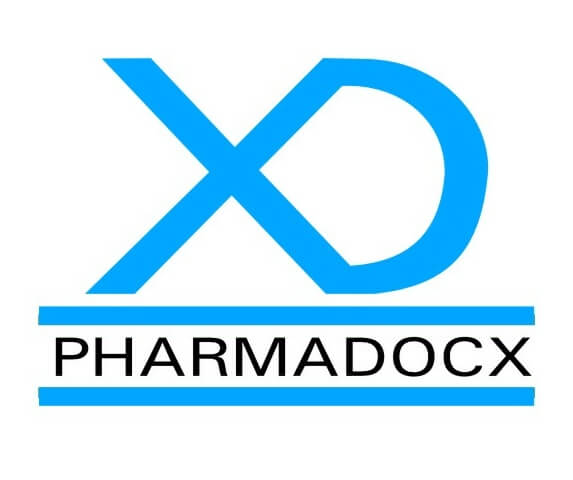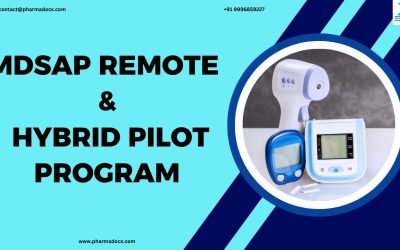Integrating unique device identification (UDI) into your quality management system (QMS) will enhance traceability, compliance, and operational excellence. UDI will improve efficiency of the medical device supply chain as well as enhance patient safety and post-market surveillance. We have prepared a detailed guide on how to integrate UDI into QMS.
What is unique device identification (UDI)?
Unique device identification (UDI) is a globally standardized system that assigns a distinct code to every medical device to ensure traceability, enhance patient safety, and streamline regulatory oversight. UDI is a system developed and mandated by the FDA and EU to improve patient safety, device traceability, and post-market surveillance. UDI helps clearly identify medical devices throughout their lifecycle. It improves post-market surveillance and recall efficiency. Additionally, it can be used to combat counterfeit products. Furthermore, it enhances supply chain and inventory management. Notably, it has become mandatory as a part of most regulatory guidelines, namely EU MDR 2017/745, FDA UDI Rule (21 CFR Part 830), and international medical device regulators forum (IMDRF) UDI Guidance.
The IMDRF promotes UDI harmonization across jurisdictions. While formats may vary slightly, the core principles remain consistent globally. UDI is encoded in both human-readable format and automatic identification and data capture (AIDC) format (e.g., barcode, QR code).
Components of a UDI
A UDI consists of two main parts:
- UDI-DI (device identifier): Fixed portion that identifies the medical device model/version and manufacturer.
- UDI-PI (production identifier): Variable portion that includes production data like lot/batch number, serial number, expiration date, and manufacturing date.
UDI implementation requirements
- Labeling and packaging: UDI must appear on device labels and packaging. For reusable devices, UDI must be directly marked on the device itself.
- Data submission: Medical device manufacturers must submit UDI data to centralized databases, namely FDA Global Unique Device Identification Database (GUDID) and EU European Database on Medical Devices (EUDAMED).
- Issuing agencies: UDI codes are generated by accredited agencies, such as GS1, HIBCC, and ICCBBA
5 key benefits of using UDI in medical device production
- Traceability: Enables tracking from production to patient use
- Recall efficiency: Speeds up identification and removal of faulty devices
- Counterfeit prevention: Ensures authenticity of devices in the market
- Inventory management: Improves logistics and stock control
- Patient safety: Enhances adverse event reporting and device monitoring
Why should UDI be integrated into the medical device QMS?
Integrating UDI into QMS is a strategic move that enhances traceability, compliance, and operational excellence across the product lifecycle. We have presented the reasons why you should integrate UDI into QMS.
- Regulatory compliance: The most important reason for integrating UDI into QMS is regulatory compliance. FDA (21 CFR Part 820) and EU MDR (2017/745) require UDI integration into device labeling, documentation, and traceability systems. A QMS embedded with UDI ensures seamless alignment with GMP, ISO 13485, and IMDRF regulatory expectations. Furthermore, it supports audit readiness by providing structured, accessible, and traceable data.
- Enhanced traceability and recall management: UDI enables end-to-end traceability from manufacturing to patient use. Moreover, in the event of a product recall, UDI-linked QMS records allow for rapid identification of affected lots or serial numbers. Additionally, it helps with targeted communication with distributors and users as well as efficient removal of nonconforming products.
- Improved labeling and documentation control: UDI integration ensures that labeling SOPs, work instructions, and design history files (DHF)are consistent and version-controlled. It reduces labeling errors and supports automated label generation through ERP/QMS integration.
- Data integrity and digitalization: Embedding UDI into QMS supports digital transformation. It enables barcode scanning for real-time data capture, facilitates UDI-linked CAPA, and complaint management. Furthermore, it enhances electronic Device History Records (eDHR) and UDI traceability matrices.
- Smarter post-market surveillance (PMS): UDI-linked QMS enables trend analysis of adverse events by device identifier, real-world performance monitoring across geographies, and proactive risk management using UDI-tagged field data.
- Supplier and production control: UDI supports supplier traceability by linking raw materials and components to finished goods. It enhances batch control, process validation, and production recordkeeping.
- Global market access and harmonization: A UDI-integrated QMS simplifies multi-country submissions by aligning with GUDID (USA), EUDAMED (EU), UDIs under CDSCO (India), and other IMDRF-compliant systems. Moreover, it reduces duplication and accelerates regulatory approvals.
- Supports lifecycle management: UDI becomes a central reference across design changes, version control, and product obsolescence. Additionally, it ensures that all lifecycle stages are synchronized and documented.
Thus, integrating UDI into QMS boosts operational efficiency, regulatory agility, patient-centric safety, and digital traceability.
Step-by-Step guide to integration of UDI into QMS
To integrate UDI into QMS, we have prepared this structured 10-step guide. This guide will help you align your QMS embedded with UDI with global regulatory expectations and support traceability, compliance, and operational efficiency.
- Step 1: Understand UDI regulatory requirements: Review region-specific mandates (e.g., FDA 21 CFR Part 830, EU MDR Article 27 & 29, IMDRF guidelines). Identify device classification and applicable deadlines.
- Step 2: Conduct a QMS gap assessment: Evaluate current QMS processes (labeling, documentation, traceability, PMS) for UDI readiness. Identify areas needing updates or new procedures.
- Step 3: Select an accredited issuing agency: Choose from GS1, HIBCC, or ICCBBA to generate standardized UDI codes. Ensure compatibility with GUDID (USA) or EUDAMED (EU) databases.
- Step 4: Assign UDI-DI and UDI-PI: Define fixed (DI) and variable (PI) identifiers for each device model/version. Additionally, maintain a master UDI record for traceability and version control.
- Step 5: Update labeling and packaging SOPs: Incorporate UDI in both human-readable and AIDC formats (e.g., barcode, QR code). For reusable devices, ensure direct marking on the device.
- Step 6: Revise technical documentation: Embed UDI into Design History Files (DHF), Device Master Records (DMR), and Risk Management Files. Link UDI to product specifications, change control, and lifecycle records.
- Step 7: Integrate UDI into electronic systems: Update ERP, QMS, and inventory systems to capture and manage UDI data. Enable barcode scanning and automated data capture for production and distribution.
- Step 8: Submit UDI data to regulatory databases: Upload UDI-DI and associated metadata to FDA GUDID (for US market) or EU EUDAMED (for EU market). Ensure data accuracy and version control.
- Step 9: Train cross-functional teams: Organise training sessions to educate regulatory, quality, production, and labeling teams on UDI workflows. Include UDI in onboarding, SOPs, and audit preparation modules.
- Step 10: Monitor and maintain UDI records: Establish procedures for UDI updates during design changes, recalls, or rebranding. Link UDI to CAPA, complaints, and post-market surveillance data.
By following these steps, you can easily make UDI a part of your QMS.
8 Pro tips for a smooth integration of UDI into QMS
- Use a UDI traceability matrix to map identifiers across QMS modules.
- Align UDI integration with ISO 13485, ISO 14971, and GMP principles.
- Consider creating a UDI implementation plan with timelines, roles, and risk controls.
- Embed UDI into design and risk files.
- Audit your UDI processes regularly.
- Automate labeling and data capture.
- Enable trend analysis and real-world performance monitoring by using UDI.
- Stay updated on enforcement deadlines across regions (e.g., FDA, EU MDR, CDSCO).
With Pharmadocx Consultants as your trusted medical device regulatory consultant, integrating UDI into QMS will be a seamless journey. This will be a major step towards enhanced compliance, traceability, and improved patient safety. Drop an email at [email protected] or call/Whatsapp on 9996859227 to get started.





